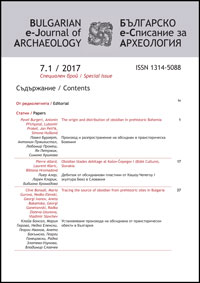Differences in the selection of raw materials at the site of Polgár-Csőszhalom, northeast Hungary
Differences in the selection of raw materials at the site of Polgár-Csőszhalom, northeast Hungary
Author(s): Norbert FaragóSubject(s): Archaeology
Published by: Асоциация на българските археолози
Keywords: Late Neolithic; chipped stones; intra-site analysis; household archaeology;raw materials;
Summary/Abstract: Chipped stone artefacts played an important role in sustaining human life not just in the Palaeolithic, but in the Neolithic period also. The raw material preferences and choices became more indicative as more complex settlements and societies emerged. Chipped stones in different contexts teach us to take into consideration the many aspects of the prehistoric worldview. The Late Neolithic site of Polgár-Csőszhalom reflects well this combined phenomenon, where two different habitation units (tell and horizontal settlement), two different geographical regions (Central Europe and the Balkans), two different aspects of life (ritual and profane) met and mixed with each other. Although we would like to think of these categories as more plastic and permeable for the prehistoric people, it is worth trying to investigate separately the various situations in which chipped stone artefacts played their role. Through these analyses it became clear that generally the local raw material is more related to the supposed everyday life part of the settlement, while the tell is more oriented toward distant sources. In the meantime, in other situations the stone itself became a medium and bears a significance, no matter which type was used. In some cases, the choice of raw material and technology used may have been dictated by practical reasons, without any other underlying motivation.
Journal: Българско е-Списание за Археология
- Issue Year: 7/2017
- Issue No: 1
- Page Range: 85-115
- Page Count: 31
- Language: English

